Related Research Articles

Elizabeth Garrett Anderson was an English physician and suffragist. She is known for being the first woman to qualify in Britain as a physician and surgeon and as a co-founder and dean of the London School of Medicine for Women, which was the first medical school in Britain to train women as doctors. She was the first female dean of a British medical school, the first woman in Britain to be elected to a school board and, as mayor of Aldeburgh, the first female mayor in Britain.

The history of medicine is both a study of medicine throughout history as well as a multidisciplinary field of study that seeks to explore and understand medical practices, both past and present, throughout human societies.

Agnodice or Agnodike is a legendary figure credited as the first female midwife or physician in ancient Athens. Her story is told by the Roman author Gaius Julius Hyginus in his Fabulae. Agnodice is not generally believed to be a historical figure, but her story has been deployed both in support of and in opposition to women practicing midwifery or medicine.

Marie Elisabeth Zakrzewska was a Polish-American physician who made her name as a pioneering female doctor in the United States. As a Berlin native, she found great interest in medicine after assisting her mother, who worked as a midwife. Best known for the establishment of the New England Hospital for Women and Children, she opened doors to many women who were interested in the medical field and provided them with hands-on learning opportunities. Within the New England Hospital, she established the first general training school for nurses in America. Her drive and perseverance made the idea of women in medicine less daunting. She also initiated the creation of the first sand gardens for children in America.
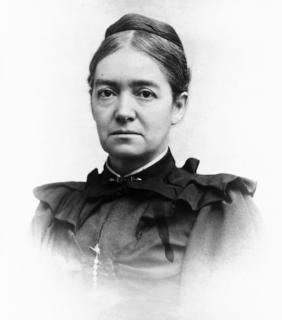
Mary Corinna Putnam Jacobi was an English-American physician, teacher, scientist, writer, and suffragist. She was the first woman admitted to study medicine at the University of Paris and the first woman to graduate from a pharmacy college in the United States.

Elizabeth Blackwell was a British and American physician, notable as the first woman to earn a medical degree in the United States, and the first woman on the Medical Register of the General Medical Council for the United Kingdom. Blackwell played an important role in both the United States and the United Kingdom as a social reformer, and was a pioneer in promoting education for women in medicine. Her contributions remain celebrated with the Elizabeth Blackwell Medal, awarded annually to a woman who has made a significant contribution to the promotion of women in medicine.
The London School of Medicine for Women (LSMW) established in 1874 was the first medical school in Britain to train women as doctors. The patrons, vice-presidents, and members of the committee that supported and helped found the London School of Medicine for Women wanted to provide educated women with the necessary facilities for learning and practicing midwifery and other branches of medicine while also promoting their future employment in the fields of midwifery and other fields of treatment for women and children.
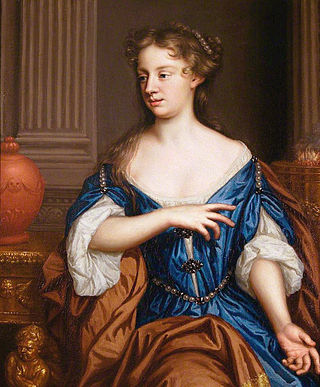
Mary Beale was an English portrait painter. She was part of a small band of female professional artists working in London. Beale became the main financial provider for her family through her professional work – a career she maintained from 1670/71 to the 1690s. Beale was also a writer, whose prose Discourse on Friendship of 1666 presents a scholarly, uniquely female take on the subject. Her 1663 manuscript Observations, on the materials and techniques employed "in her painting of Apricots", though not printed, is the earliest known instructional text in English written by a female painter. Praised first as a "virtuous" practitioner in "Oyl Colours" by Sir William Sanderson in his 1658 book Graphice: Or The use of the Pen and Pensil; In the Excellent Art of PAINTING, Beale's work was later commended by court painter Sir Peter Lely and, soon after her death, by the author of "An Essay towards an English-School", his account of the most noteworthy artists of her generation.

The Elizabeth Garrett Anderson and Obstetric Hospital and its predecessor organisations provided health care to women in central London from the mid-Victorian era. It was named after Elizabeth Garrett Anderson, one of Britain's first female physicians, and its work continues in the modern Elizabeth Garrett Anderson wing of University College Hospital, part of UCLH NHS Foundation Trust.
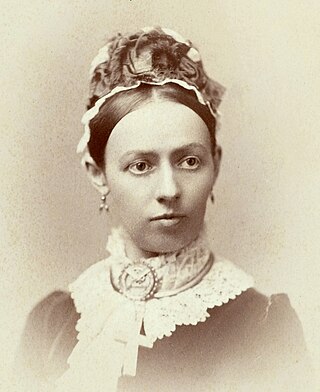
Dame Mary Ann Dacomb Scharlieb, DBE was a pioneer British female physician and gynaecologist in the late 19th/early 20th centuries. She had worked in India. She was the first female student of medicine at Madras Medical College. After her graduation and work in India, she went to England to do her Postgraduation in Medicine (gyneacology) and by her persistence she returned to the UK to become a qualified doctor. She returned to Madras and eventually lectured in London. She was the first woman to be elected to the honorary visiting staff of a hospital in the UK and one of the most distinguished women in medicine of her generation.

Dame Edith Mary Brown, was an English doctor and medical educator. She founded the Christian Medical College Ludhiana in 1894, the first medical training facility for women in Asia, and served as principal of the college for half a century. Brown was a pioneer in the instruction of Indian female doctors and midwives with modern western methods.
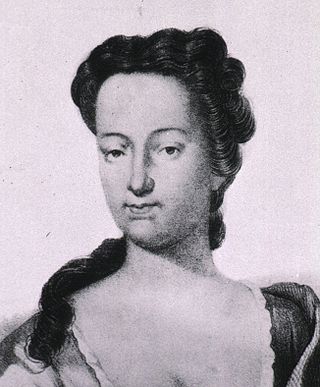
Elizabeth Blackwell was a botanical illustrator best known as drawer and engraver of the plates for A Curious Herbal, published between 1737 and 1739. It illustrated medicinal plants in a reference work for the use of physicians and apothecaries.
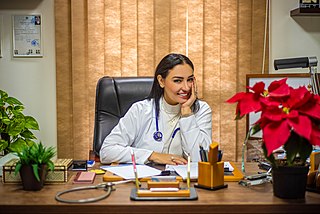
The presence of women in medicine, particularly in the practicing fields of surgery and as physicians, has been traced to the earliest of history. Women have historically had lower participation levels in medical fields compared to men with occupancy rates varying by race, socioeconomic status, and geography.

Agnes McLaren FRCPI was a respected Scottish doctor who was one of the first to give medical assistance to women in India who, because of custom, were unable to access medical help from male doctors. Agnes was active in social justice causes including protests against the white slave trade. She signed the 1866 women's suffrage petition and was secretary of the Edinburgh National Society for Women's Suffrage alongside her stepmother, Priscilla Bright McLaren. In 1873 she travelled with Priscilla and Jane Taylour to give suffrage lectures in Orkney and Shetland. Her father had supported the campaign of first women who sought to study medicine at University of Edinburgh and Agnes became friends with Sophia Jex-Blake, one of the Edinburgh Seven. Her father did not however, support Agnes' own ambitions in this area. And as she could not graduate in medicine in Scotland, she went to study in France and later, in order to be permitted to practice at home, became a member of the Royal College of Dublin.

Hannah Woolley, sometimes spelled Wolley, was an English writer who published early books on household management; she was probably the first person to earn a living doing this.
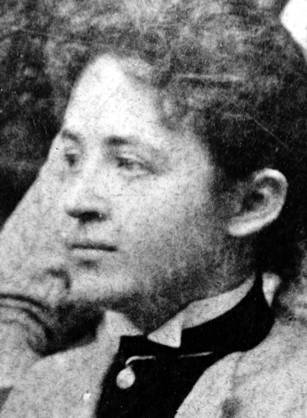
Kate Campbell Hurd-Mead was a pioneering feminist and obstetrician who promoted the role of women in medicine. She wrote A History of Women in Medicine: From the Earliest of Times to the Beginning of the Nineteenth Century in 1938. She was born in Danville, Quebec, Canada, and died in Haddam, Connecticut, United States.
Elizabeth Walker was a British druggist known for her charity and piety. She kept a journal which was published and commented on posthumously by her husband, Anthony Walker, entitled, “The vertuous wife: or, the holy life of Mrs. Elizabeth Walker, late wife of A. Walker, D.D. sometime Rector of Fyfield in Essex: Giving a modest and short account of her exemplary piety and charity. Published for the glory of God, and provoking others to the like graces and vertues. With some useful papers and letters writ by her on several occasions.”

Alexandra Mary Chalmers Watson CBE,, known as Mona Chalmers Watson, was a British physician and head of the Women's Army Auxiliary Corps. The first woman to receive an MD from the University of Edinburgh, she helped found the Elsie Inglis Hospital for Women, was the first president of the Edinburgh Women's Citizen Association, a staff physician and later senior physician at the Edinburgh Hospital and Dispensary for Women and Children, and co-edited the Encyclopaedia Medica with her husband, Douglas Chalmers Watson. At the time of her death in 1936, she was president of the Medical Women's Federation, having been elected May 1935.
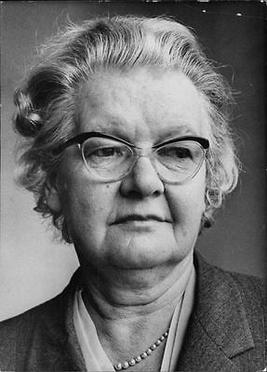
Dame Albertine Louisa Winner was a British physician and medical administrator. After graduating from University College Hospital Medical School, Winner practised at the Elizabeth Garrett Anderson Hospital, the Mothers' Hospital in Clapton, and Maida Vale Hospital for Nervous Diseases.
Mary Clarke was an English gentlewoman who is remembered as a prolific letter writer. She married Edward Clarke on 13 April 1675 and had eleven children with him. Whilst he spent time in London as a Member of Parliament, she ran the family estate at Chipley in Somerset and raised their children. Clarke corresponded frequently with her husband by letter and also exchanged messages with the philosopher John Locke.
References
- ↑ Cook, Harold J. (23 September 2004). ""Mary Trye"". Oxford Dictionary of National Biography (online ed.). Oxford University Press. doi:10.1093/ref:odnb/45830.(Subscription or UK public library membership required.)
- 1 2 Read, Sara (1 September 2016). ""My Method and Medicines": Mary Trye, Chemical Physician" (PDF). Early Modern Women. 11 (1): 137–148. doi:10.1353/emw.2016.0048. ISSN 1933-0065. S2CID 79376248.
- ↑ Ostovich, Helen; Sauer, Elizabeth; Sauer, Professor of English Elizabeth; Smith, Melissa (2004). Reading Early Modern Women: An Anthology of Texts in Manuscript and Print, 1550-1700. Psychology Press. ISBN 978-0-415-96646-7.
- ↑ Trye, Mary (1675). Medicatrix, Or, The Woman-Physician. London: Printed By T.R. and N.T. and sold by Henry Broome. pp. A2.
- ↑ Whaley, L. (8 February 2011). Women and the Practice of Medical Care in Early Modern Europe, 1400-1800. Springer. ISBN 978-0-230-29517-9.
- ↑ English women's voices, 1540-1700. Miami: Florida International University Press. 1992. ISBN 978-0-8130-1083-0.
- ↑ Clairhout, Isabelle (8 September 2014). "Erring from Good Huswifry? The Author as Witness in Margaret Cavendish and Mary Trye". Renaissance and Reformation. 37 (2): 81–114. doi: 10.33137/rr.v37i2.21811 . ISSN 2293-7374. S2CID 171866511.